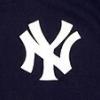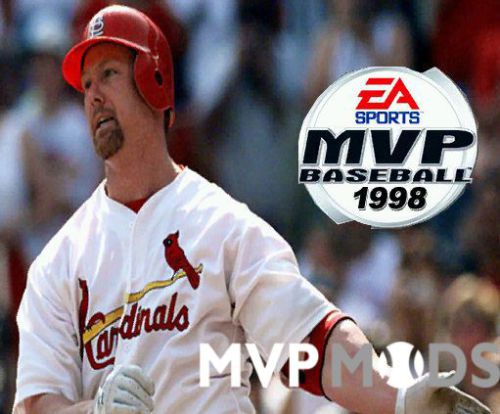Joe Black
Joe Black helped lead the Brooklyn Dodgers to the 1952 pennant, going 15-4 with 15 saves, and a 2.15 ERA. He won the NL’s Rookie of the Year Award and became the first African American pitcher to win a World Series game. “Let’s put it this way,” Dodgers manager Chuck Dressen told reporters, “Where would we be without him?” Teammate Carl Erskine said, “He put us in the World Series. He was the main cause to get us there.”
During the middle of the 20th century, Black, along with Joe Page, Jim Konstanty, and Hoyt Wilhelm, helped define the importance of relief pitching as a specialty. Managers and fans began to recognize relievers’ value to teams rather than view them as failed starting pitchers.
Black was born on February 8, 1924 in Plainfield, New Jersey, an industrial and residential city of 30,000 people, 13 miles from Newark. He grew up in a racially mixed working class neighborhood with white friends in school and in the community, including in his athletic activities. Some Plainfield police officers provided Black and his friends with equipment and uniforms and taught them how to play team baseball. By the time he reached Plainfield High School (PHS), Black was an outstanding athlete and excellent student. He played on the football and basketball teams and played first base, third base, left field, and catcher for the baseball team, but did not pitch. He was named PHS’s outstanding athlete for the 1941-42 school year.
As he was nearing his high school graduation in 1942, his dream of playing in the majors was shattered.
“I was batting .400 when I was a senior in high school. The scouts were talking to other people, but they didn’t speak to me. I said, ‘Hey, I am the captain of the team. I out-hit them all — why don’t you sign me?’ A scout said, ‘Because you are colored, and they don’t play baseball in the big leagues.’” As Black recalled, “I got mad and hateful. I had a scrapbook of ballplayers, and I tore up all of their pictures — they were all white. The one picture that I didn’t tear was Hank Greenberg, my idol. He was big and hit home runs, and that’s what I wanted to do. My mother said, ‘Son, you can’t be mad.’ I said, ‘But mama, white people won’t let me play!’”
Black received a partial football scholarship at Morgan State College [now University], a historically black institution in Baltimore, beginning in September 1942. Growing up in Plainfield, Black had felt the stings of prejudice and discrimination, but moving to Baltimore, a legally segregated city, was a different experience.
As he recalled, “You would go into a store to try on a pair of shoes, and you couldn’t try them on. You couldn’t try a coat on. You bought stuff, but you couldn’t bring it back—whether it fits or not.”
In the summer of 1943, after his freshman year, Black and his college friend Cal Irvin (brother of future New York Giants star Monte Irvin) went to a Negro League game between the Baltimore Elite Giants and the Newark Eagles at Bugle Field. Vernon Green, the Elite Giants’ business manager, overheard Black boasting that he was as good or better than some of the players on the field. Green arranged for Black to try out for the team. He played several games at shortstop, hit poorly, and asked the manager to give him a chance to pitch.The official Negro League record book lists Black as having pitched in two games for the Elite Giants that season.
Black joined the Army Medical Corps on August 17, 1943. He served for 2 ½ years in the Army during World War 2, until March 1946. “Sixteen months after I was drafted before I touched a rifle. I pitched a lot,” he told Roger Kahn.
Black was 21 years old and still in the Army, when, in October 1945, Branch Rickey signed Jackie Robinson. ”I started dreaming,” Black recalled. “And that’s what happened to most of the guys in the Negro Leagues. You forgot your age. You said, ‘If Jackie makes it, I can make it.”’
In March 1948, he rejoined the Elite Giants and played with them each spring and summer until 1950. He pitched in the 1947, 1948, and 1950 All-Star East-West games at the Polo Grounds, Yankee Stadium, and Comiskey Park, respectively, and helped the Elite Giants win the 1949 Negro League National Championship.
After graduating in 1950, at 26, Black pitched for the Elite Giants during the summer, then joined a barnstorming team of Black players led by Luke Easter. In the fall, Black joined the Cienfuegos Elefantes in the integrated Cuban winter leagues. While in Cuba in 1950, Black met Fidel Castro, then a young lawyer and budding politician. Castro often attended winter league games. In addition, Black played a one-on-one basketball game with the future “jefe.” Castro corresponded with Black when Black was with the Dodgers in 1952.
In 1951, the Dodgers purchased his and Jim Gilliam’s contracts from the Elite Giants for $11,000. The Dodgers sent Black to their Triple-A teams in Montreal and St. Paul, where he posted a combined 11-12 record with a 3.28 ERA.
Black pitched 170 innings in the minors and another 163 innings in Cuba, so his arm was sore when he showed up at the Dodgers’ Vero Beach spring training camp in 1952. He didn’t tell anyone. He had neither a contract nor a place on the roster.
The team’s spring training facility, Dodgertown, was integrated. Black and white players slept, ate, and practiced together in the compound. It had its own swimming pool, basketball court, pool tables, and occasional movie nights. But the world immediately outside Dodgertown was segregated. Blacks couldn’t eat in the restaurants or get a haircut and were banned from Vero Beach’s beaches, movie theaters, and golf courses. Laundries wouldn’t take their clothing. When the Dodgers traveled to play exhibition games, black and white players had to stay in separate hotels.
The Dodgers assigned Black to room with Robinson. When Robinson walked into the room they were sharing in Vero Beach, he asked Black, “Can you fight?” “Yeah,” Black responded. “But we’re not going to fight,” Robinson said. He explained, “We can’t allow those crazy sons of bitches to bother us. We have the ability to play, and we’re going to show them that we’re in baseball to stay.” Robinson took the time to “impress upon me the psychological changes that must be endured by the black ballplayers,” Black recalled. Robinson had endured racial slurs from fans and opposing players, even years after he’d established himself as a star ballplayer. “I couldn’t have done it,” Black said.
Manager Chuck Dressen first put Black into a game on May 1 when he started the seventh inning against the Cubs at Wrigley Field. He struck out slugger Hank Sauer (that year’s NL MVP), struck out third baseman Randy Jackson, and got catcher Toby Atwell (who was leading the NL in batting) to ground out to second base. The game put the Dodgers in first place, ahead of the Giants, where they would remain for the rest of the season.
After his first seven appearances (14 innings), Black’s ERA stood at 0.00. At the All-Star break, Black was 3-0 with five saves in 38 2/3 innings, with a 1.63 ERA. Dressen relied on him more during the second half of the season. Black lifted up the Dodgers to help compensate for the loss of Don Newcombe (who was in the army) and for the injuries to the other pitching mainstays, including Preacher Roe, Carl Erskine, and Ralph Branca. Dressen used Black as a utility reliever. In his 54 relief appearances, he pitched less than two innings 22 times, two innings 17 times, three innings four times, four innings four times, five innings three times, six innings twice, seven innings once, and eight innings once. Eight of his 11 stints pitching four innings or more occurred down the stretch in August and September.
By the end of the season, he had appeared in 56 games with a 15-4 record and 15 saves. In 142 innings, he struck out 85 batters, walked only 41, and gave up just nine home runs. Black’s 2.15 ERA was the NL’s lowest, but he was eight innings short of the threshold for the title. The winner was another rookie reliever, the Giants’ Hoyt Wilhelm, with a 2.43 ERA in 159 innings.
Black, who stood 6’2” and 220 pounds, with broad shoulders, long arms, and big hands, had only two pitches — a powerful fastball and a “nickel curve,” which broke like a slider. He made up for his limited repertoire by having pinpoint control.
Black could intimidate opposing hitters by knocking them down with his fastball. “We’re professionals,” he explained. “If I send a guy into the dirt, it isn’t personal.” But at times he used the knock-down pitch as a weapon against racism. In one game, players on the all-white Cincinnati Reds (they did not integrate until 1954) began singing “Old Black Joe” from the opposing team’s dugout, trying to rattle Black on the mound. “I was seething,” Black recalled. He quickly knocked down several Reds hitters. After that, Black recalled, “The singing came to a halt.”
Dressen started Black in his two final games of the season, thinking that he might have to use him as a starter in the World Series. The World Series was between two New York City teams. They were scheduled to play seven games in seven days, with no travel days in between. That shaped Dressen’s decision to start Black in the first game, anticipating that he would pitch the fourth game and, if necessary, the seventh game.
Wrote AP sportswriter Gayle Talbot, “Never before in big league history has a champion of either circuit been forced to undertake such as desperate gamble.” New York Times writer John Debringer wrote that Black “found himself cast in as difficult a role as ever was assigned to a rookie.”
In the opening game, Black threw a six-hitter to beat Allie Reynolds 4-2, making him the first African American pitcher to win a World Series game. Three days later, Black faced Reynolds again in the fourth game at Yankee Stadium. Black gave up only three hits and one run in seven innings. But Reynolds pitched a shutout and defeated the Dodgers 2-0. (Dodgers reliever John Rutherford gave up another run in the eighth inning). Strapped for pitching, Dressen called on Black to start the seventh game at Ebbets Field. “Brooklyn’s Hopes for Series Honors Ride on Trusty Arm of Joe Black Today,” read the New York Times headline that morning. Black pitched well for three innings, giving up no hits and no runs, but then, in his third start in seven days, he ran out of gas. In both the fourth and fifth innings he surrendered two hits and one run, including a homer by Gene Woodling. In the sixth inning, Black gave up a home run to Mickey Mantle and a single to Johnny Mize. Dressen brought in Roe to relieve Black. Four Yankee pitchers held the Dodgers to two runs for a 4-2 victory and the World Series championship.
Near the end of the baseball season, Dressen told Black that he might need him to become a starting pitcher and that he should add a new pitch to his repertoire. While pitching for Roy Campanella’s all-Black post-season barnstorming team, Black experimented trying to throw a knuckleball, without success. When Black got to Vero Beach for spring training, he tried to learn to pitch a forkball, a change-up, and a sinker, but he couldn’t grip the ball properly because of a deformity he had on his index finger. The Dodger coaches worked with Black to experiment on his stride on the mound, at times urging him to lengthen it and at other times to shorten it. Nothing worked, so Dressen told Black to go back to his former pitching style. But by then Black had forgotten what he’d done to achieve so much success in his rookie year. He couldn’t get his old form back, and each time he took the mound — during spring training and after the season started — he had lost his form and, with it, his confidence.
In his second season, Black was no longer the domineering pitcher he had been in 1952. He could still throw hard, but his control, timing, and pitching mechanics suffered. His teammates and even players on opposing teams offered advice, but it didn’t help. By July, Dressen no longer trusted Black as the closer. Black pitched in fewer games and clutch situations. Black recalled that “I was not a pitcher. I was a thrower, without control or confidence.” The Dodgers won the pennant, but Black’s contribution was nothing like his previous year’s record. He pitched in 34 games and only 71 innings. His W-L record was 6-3, but his ERA skyrocketed to 5.33. He had only five saves. He pitched only one inning during the Yankees-Dodgers six game World Series.
In 1954, the Dodgers’ new manager, Walter Alston, used Black sparingly. By May 26 he had pitched in five games and given up 11 hits, including three homers in seven innings, walked five batters, and struck out three, with a 11.57 ERA. On May 30 the Dodgers demoted him to their Montreal AAA team. Soon after arriving in Montreal, the team doctor discovered that Black had torn muscles in his right shoulder. This helped account for the loss of speed on his fastball. For the rest of the season, a doctor gave him weekly cortisone shots to ease the pain. His performance improved. He started 24 games and relieved in seven more. In 185 innings, he struck out 94 batters and walked 61, but allowed 181 hits. He won 12 games, lost 10 games, and finished with a 3.60 ERA.
On June 9, 1955 they traded him to the Cincinnati Reds for outfielder Bob Borkowski. That year the Dodgers would win their first World Series, but Black was no longer on the team. The Reds used him in as both a starter (11 games) and reliever (21 games). He pitched 102 innings, went 5-2, with a 4.22 ERA.
In 1956, manager Birdie Tebbetts used Black exclusively in relief. He accumulated a 3-2 record and 4.52 ERA in 32 outings, but his performance was uneven. He won his last major league game on June 24, going five and two-thirds innings without giving up a hit to beat the Dodgers in relief.
In January 1957, the Redlegs sold Black to the Seattle Raniers in the Pacific Coast League. During the Raniers’ spring training in San Bernardino, Black’s arm began hurting. A doctor at the local VA hospital did X-rays. They revealed bone chips in his right elbow and a small crack developing in his humerus, the bone from the shoulder to the elbow. Afraid of being let go, he didn’t tell anyone.
At the end of July of 1957, after serving as a part-time batting practice pitcher with the Dodgers, Black contacted Washington Senators manager Cookie Lavagetto, a former Dodger infielder, to ask for a chance. The Senators signed him as a free agent on August 1, making him the team’s first American-born black player. (The team had three black Cubans and one black Panamanian before hiring Black).
Black had lost the velocity on his fastball, and lost his confidence, and players teed off on him. He pitched seven games and 12 2/3 innings for the Senators, giving up 22 hits, losing one game, and ending the season with a 7.11 ERA. His last major league outing was on September 11, 1957 against the Tigers.
When he returned his Senators contract unsigned, the team gave him his unconditional release on November 25, 1957. He could not endure more cortisone shots to relieve his pain, but he was unwilling to undergo an operation. At 33, his professional baseball career was over.
In 1972, after Jackie Robinson had become partly blind and close to death from diabetes, Black pressured Commissioner Bowie Kuhn to honor Robinson for breaking baseball’s color barrier 25 years earlier. Kuhn invited Robinson to throw out the first ball before the second game of the World Series in Cincinnati on October 15. Robinson used the occasion to criticize baseball for its slow racial progress. After Robinson died nine days later, Black was one of the six pallbearers at his funeral.
Black died of prostate cancer at age 78 on May 17, 2002. He had a career record of 30 - 12 with a 3.91 earned run average.




